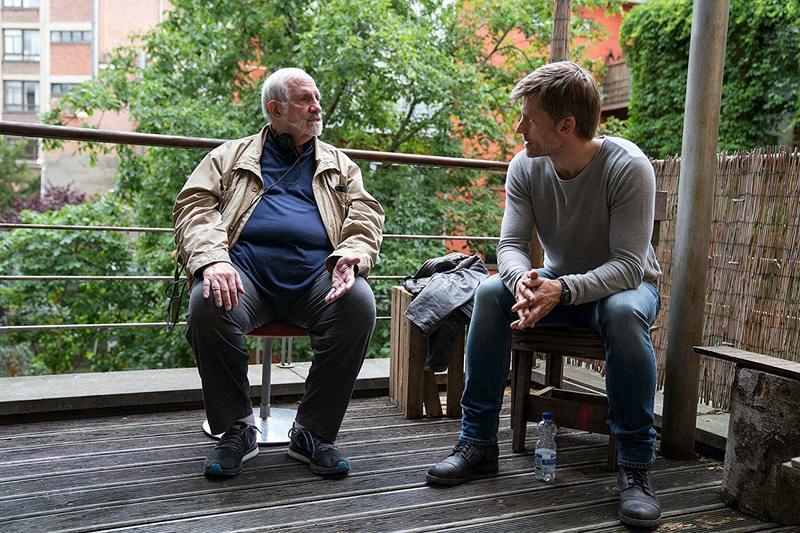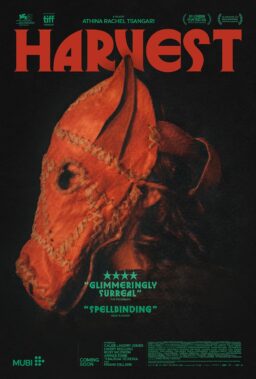Brian De Palma’s new movie “Domino” is coming out to little fanfare this week, in a few theaters and on VOD. Even the legendary director himself, in an interview with Le Figaro around this time last year, appeared to write off the movie as a job for hire that didn’t work out to his liking (though he describes financial problems with the producers more so than specifying grievances with the final film). It gives me no pleasure to report that “Domino” is, indeed, one of his lesser pictures.
To be clear, this isn’t the kind of “lesser” De Palma movie that will be experienced broadly as a self-indulgent failure, but beloved by the filmmaker’s virulent defenders. After all, it’s a few years too early for De Palma to deliver one of his once-a-decade palate-cleansers like “Raising Cain” (1992), “Femme Fatale” (2002), or “Passion” (2012), where he circles back to the seamy thrillers he made in the ’70s and early ’80s and gives himself a split-screen, split-diopter, and/or long-take workout. And despite his characterization of “Domino” as not his project (as in not originating with him), it’s not one of those hired-gun jobs where his craftsmanship elevates a studio thriller, like “The Untouchables” or “Mission: Impossible.” No, “Domino” is more akin to a low-budget version of some of De Palma’s least-loved output, misbegotten efforts like “Snake Eyes,” “Mission to Mars,” and “The Black Dahlia”—the studio movies that convinced him not to make studio movies anymore.
At first, it’s a little disappointing to realize “Domino” isn’t going to reach the heights of “Passion,” nevermind “Femme Fatale” or “Raising Cain.” But as with his 2000s triptych of studio disappointments, there’s also something glorious about being freed from the confines of a pretty rote thriller and simply waiting for De Palma to uncork some rococo bit of violent suspense (“Passion” has a similar waiting period, but with more sustained tension than his weakest studio films).
On paper, “Domino” is about a police officer (Nikolaj Coster-Waldau) pursuing a terrorist (Eriq Ebouaney) who murdered his partner—and who becomes entangled with a shady CIA agent (Guy Pearce), hoping to use the criminal for his own ends. But it’s really about one bravura set piece at the beginning, and one bravura set piece at the end. Most of the rest of the movie is a tangled, slack, fraying hammock tied between those two beautiful trees.
Variations on this metaphor can describe a lot of De Palma’s most inconsistent movies: “Mission to Mars,” for example, is a perfectly woven hammock tied tight between two rotting trees on the verge of collapse. The perfectly woven hammock in that movie is a superb outer-space sequence where a crew of Mars-bound astronauts must abandon their ship and attempt to land a much smaller orbiting capsule on the red planet. When I first saw this movie upon its 2000 release, I was gripped by this chunk of the movie, even seeing it twice, but came out of the experience feeling irritated with De Palma, who I’d last seen squandering the terrific simulated single-take opening sequence of “Snake Eyes”—a shot of adrenaline that carries the movie through the majority of its running time.
Yet something clicked when I saw “The Black Dahlia,” which is arguably even worse. It’s a mess of a crime movie with 30 or so minutes so that are so great they render the movie worth watching. This includes a terrific crane-shot view of a shoot-out that turns into a corpse discovery (a De Palma specialty); a wonderfully gruesome death for Aaron Eckhart’s character; and a hilarious awkward meet-the-parents dinner scene that opens with an elaborate point-of-view shot. These moments almost turn the movie’s wildly uneven casting, including Josh Hartnett as a dully morose hero, Hilary Swank having fun as an affected femme fatale, Fiona Shaw having even more fun as her horrid mother, and Scarlett Johansson before she found footing as a major star, into an asset. The mismatched cast has a kind of grotesquerie that feeds nicely into the movie’s crazier moments, and leave it awkward and ungainly in between.
Similarly, “Mission to Mars” has an old-fashioned gee-whiz approach to science fiction that’s somewhat off-putting in its tin-eared (if well-shot) opening stretch and borderline infuriating in its limping of an ending, but perfectly complements the harrowing, exciting adventure of its escape sequence. (Intentionally or not, it’s one of De Palma’s most earnestly dorky movies.) As an excuse for De Palma to float his camera around the interior of a spacecraft, it’s, well, the only De Palma movie that has scenes on the interior of a spacecraft. “Snake Eyes” deflates after its dynamite opening, yes, but in a gradual way that at least matches the fading bravado of the crooked cop played by Nicolas Cage. Moreover, Cage’s frantic smarm in the opening sequence is so well-matched to the roving show-off energy of De Palma’s camera that, upon subsequent viewings, it doesn’t much matter what happens next.
“Domino” doesn’t have a star performance to carry it along, but it does have its obligatory highlight-reel moments to open and close things up. The first one, beginning with a long push-in to establish that the cop has forgotten his firearm at home, and continuing through his partner’s murder and the murderer’s escape, is well-squeezed pulp, and the movie’s finale, involving an attempted terrorist attack at a stadium, applies that slow-burn Hitchcockian verve to a disconcertingly contemporary setting. There’s some attempt to point De Palma’s voyeurism toward the exhibition of modern terrorism, but it only occasionally tracks with what actually happens in the movie.

Maybe future repeat viewings of those good parts will be kind to “Domino” overall, just as its big-studio cousins that don’t hang together are less frustrating in retrospect. But in some ways, those two scenes are all “Domino” really needs. In the right frame of mind, coming across a couple of holy-mackerel sequences in an otherwise clumsy movie creates its own kind of ecstasy—not exclusive to this filmmaker, of course, but particularly compatible with his interests and obsessions.
De Palma has been both hailed and criticized for making self-justifying movie-movies, full of homages, films within films, and B-picture artifice, and even his most evenhanded films have especially memorable set pieces that jut out of them prominently. In his more wildly uneven work, those masterful stretches feel weirdly authentic to the experience of watching a lot of movies—in fact, they resemble the critic-like practice of sifting through hundreds of releases and finding the occasional moment of transcendence. He’s one of the best filmmakers alive at gussying up simple thriller actions—a murder, a chase, the discovery of a body—into beguiling, elaborate movies unto themselves, sometimes to the point of liberating them from their original homes in perfunctory, confusing, or uninvolving narratives. It’s a talent both expansive and, in a pleasurable way, reductive. There’s a purity to a mixed-bag De Palma movie that some genuinely successful movies will never achieve. Would his filmography be as much fun without them?











